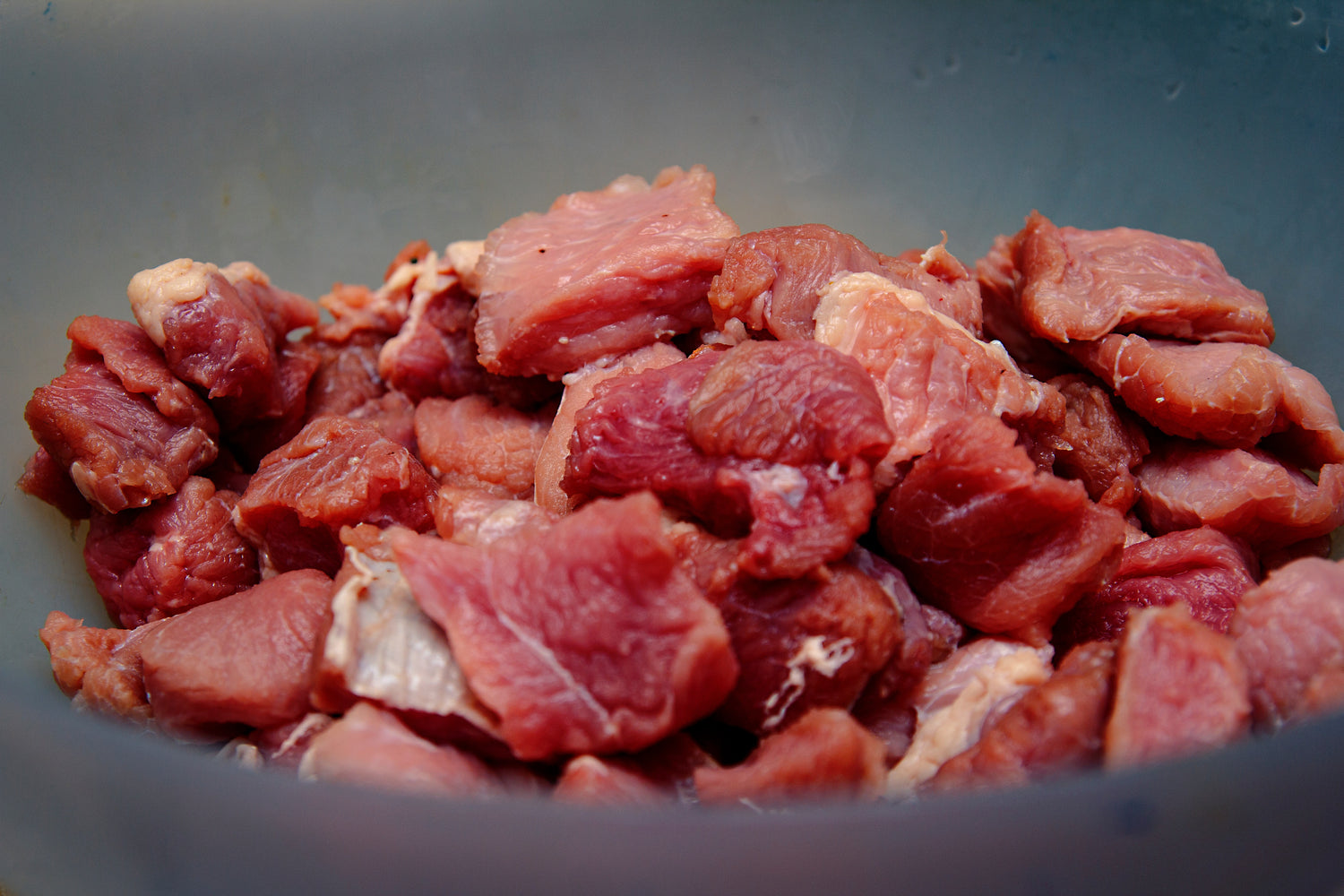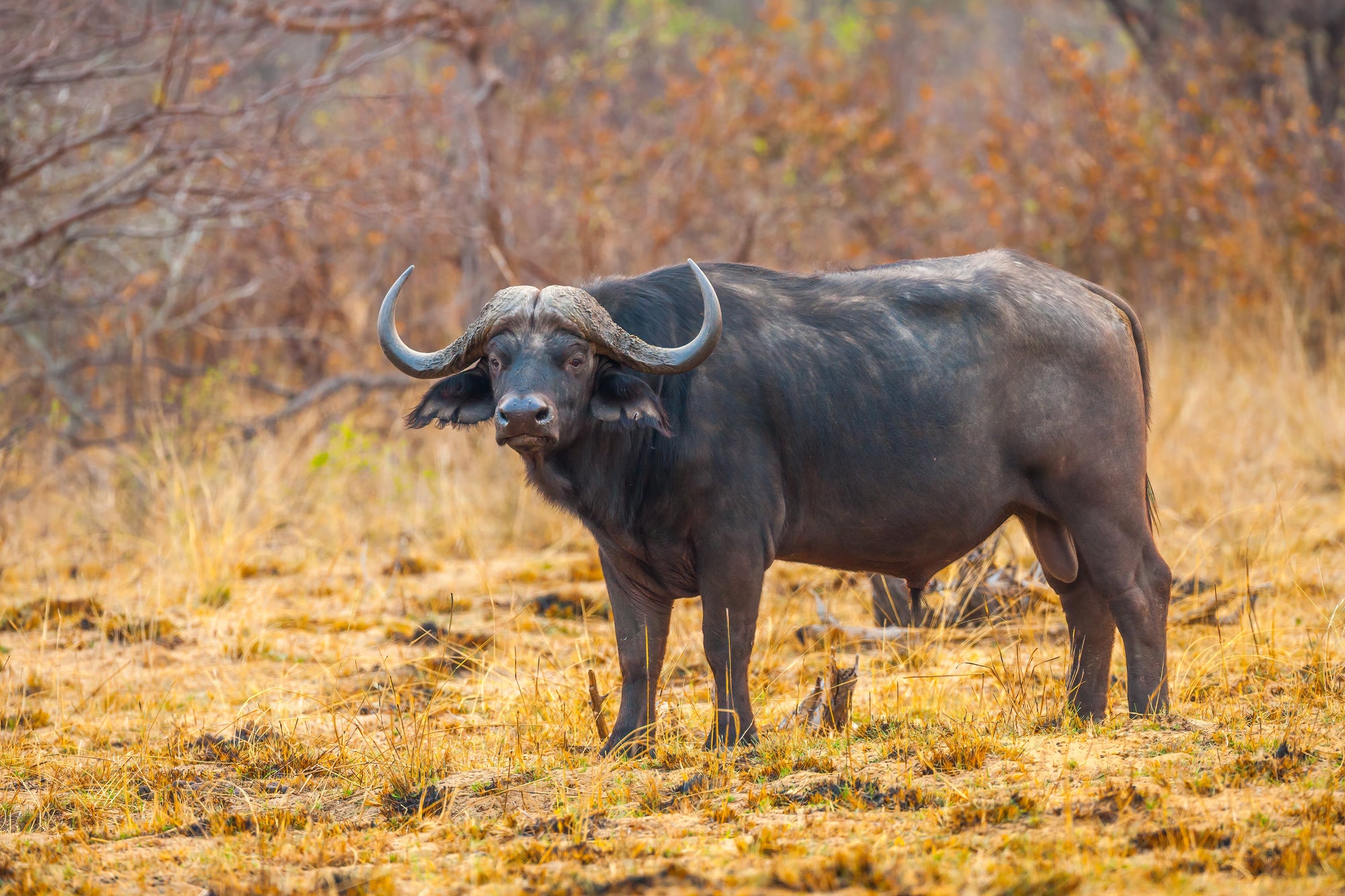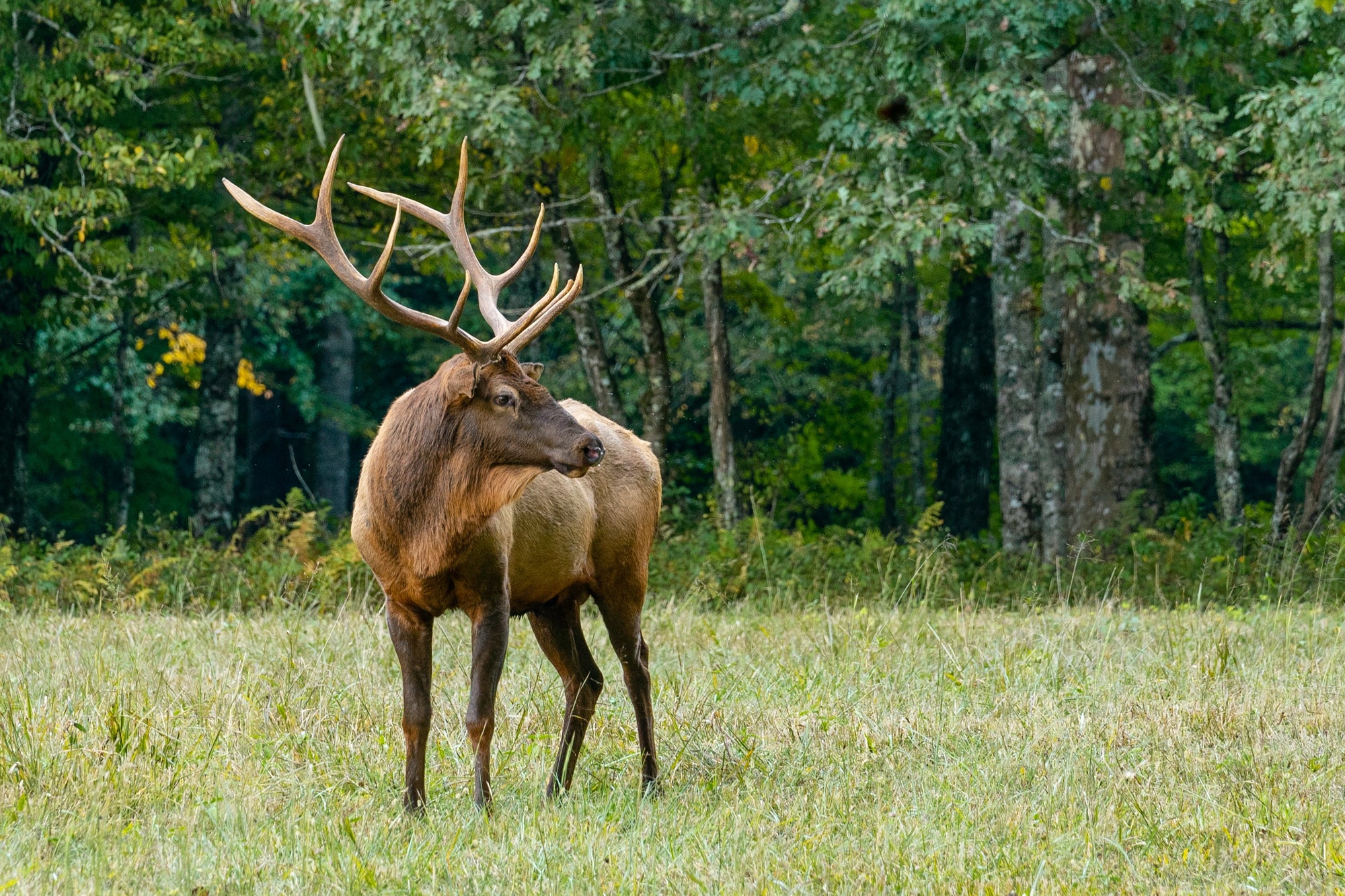There's a distinct satisfaction that comes from crafting your own beef jerky. The wafting aromas, the anticipation, and the thrill of tasting something you've created from scratch.
But alongside that excitement often comes a nagging question: how long to dehydrate beef jerky? Or, perhaps more importantly, you want to feel confident in how to tell when beef jerky is done.
After all, dehydrating meat is more art than science, and one misstep can shift your jerky from perfect to parched, or worse, leave it susceptible to spoilage.
If you've ever been caught second-guessing, constantly checking your dehydrator, or feeling the weight of wanting to get it just right, take a deep breath. You've come to the place where jerky-making meets mastery.
At Mahogany Smoked Meats, we live and breathe this craft daily. With more than 100 years of experience in crafting premium jerky to perfection, we’re your trusted guide to dehydrating beef jerky.
Whether you're a seasoned jerky enthusiast or just starting out, our expertise is at your disposal. By the time we finish this guide, you’ll feel confident in achieving that impeccable jerky texture and flavor. First, let’s look at why the proper beef jerky dehydrating time is so important.
Why Timing is Everything When Dehydrating Beef Jerky
Perfecting the beef jerky dehydration process is both an art and a science, demanding precision, patience, and a keen sense of detail. It's about striking a balance between ensuring food safety and achieving that signature jerky texture and flavor.
Beef jerky's unique appeal stems from its rich flavor, chewy texture, and long shelf-life, but achieving these characteristics isn’t just about following a recipe. These are all contingent on you dehydrating beef jerky for the proper amount of time.
The Risks of Undercooking Beef Jerky: Bacterial Growth and Spoilage
Under-dehydrated beef jerky poses not just a taste and texture problem but a serious health risk. Raw or undercooked meats can be a breeding ground for harmful bacteria like E. coli and Salmonella. When we talk about dehydrating jerky, we’re also discussing the elimination of moisture to inhibit bacterial growth.
If your jerky still has too much moisture content, it becomes vulnerable to bacterial growth and mold. Not only can this make your jerky inedible, but it also poses risks of food poisoning. A batch of jerky that's been compromised can also have a rancid or off odor, signaling that it’s no longer safe to eat.
We have more resources on the food safety side of things if you’re interested - check out responses to the question: does beef jerky expire? Or, how long does beef jerky last?
You can also learn about what happens when you eat expired beef jerky in our blog - we’re going to help you avoid that in this guide on how long to dehydrate beef jerky, though. But beyond food safety, let’s look at the taste/texture side of things.
The Downside of Overhydration: Loss of Flavor and Texture
Dehydrating beef jerky for too long can lead to over-drying. While this may not pose as immediate a health risk as undercooking, the implications for your taste buds are dire.
Over-dehydrated jerky loses its chewy and palatable texture. Instead of that enjoyable tug and pull, you might find yourself dealing with a brittle, crumbly piece that lacks moisture and feels like biting into a piece of hard bark.
Flavor, too, takes a hit with over-dehydration. All the seasonings, marinades, and natural meat flavors can diminish, leaving behind a bland taste. This is especially heartbreaking if you've invested time in marinating your meat, anticipating a flavor-packed result.
The good news? We’re going to help you avoid this by teaching you how long to dehydrate beef jerky, and how to tell when beef jerky is done. That being said, let’s look at the factors influencing the proper beef jerky dehydrating time.
Factors Affecting How Long to Dehydrate Beef Jerky
While we’d love to give you a simple answer to how long to dehydrate beef jerky, dehydrating beef jerky to perfection isn’t a simple game of watching the clock.
There are myriad variables that play into how long your beef jerky should be dehydrated for optimal taste, texture, and safety. Recognizing and understanding these factors can transform your jerky-making experience.
The Thickness of the Meat Slices
It's almost instinctual to think that the thicker the slice, the longer it'll take to dehydrate. But understanding the nuances behind this can enhance the quality of your jerky.
- Thin Slices (1/8 to 1/4 inch): Typically, thin slices will dehydrate quicker, often within 3 to 5 hours. However, a caveat to remember is that thinner slices may become too crispy if left unchecked. They can lose their chewy essence, so it's crucial to monitor them.
- Thicker Slices (1/2 inch or more): These will naturally require a longer dehydration time, sometimes up to 10 hours or more. While they retain their meaty texture, there's a greater risk of under-dehydrating them, which could be unsafe.
Humidity and Room Temperature
The environment in which you're dehydrating your beef jerky is more influential than some may believe. This is where temperature and humidity play a factor.
In highly humid environments, water is less inclined to evaporate. Consequently, the dehydration process may be prolonged. It's essential to consider using dehumidifiers in such situations or wait for a drier day.
While most dehydrators have their own heating elements, the surrounding room temperature can influence dehydration time. Cooler rooms might slightly increase the dehydration time. On the other hand, dehydrating in the heat of summer can speed the process up - but may lead to overdrying.
Type of Meat Used
Your choice of meat can alter dehydration times, too. As you can imagine, choosing the best cut of meat for beef jerky is critical to the outcome.
Lean cuts like eye of round or sirloin tip are devoid of much fat. These cuts generally dehydrate efficiently, with reduced risks of spoilage because of their low-fat content. Fat doesn’t dehydrate at the same rate as meats, after all.
That being said, if you choose a fattier cut, you might find that while the meat seems dehydrated, the fat retains a more supple, greasy texture. This can be a desired trait for some, but remember, fat can spoil quicker than lean meat.
Dehydration Method
Last but not least, the tool you use to dehydrate your beef jerky can play a significant role in determining the duration of dehydration.
Traditional dehydrators are specifically designed to remove moisture content efficiently, with built-in fans and temperature settings. They can typically dehydrate jerky within 4 to 12 hours, depending on the variables mentioned above.
If you don’t have a dehydrator, you may be considering dehydrating beef jerky in the oven. While it's possible, it's often less efficient than a dedicated dehydrator. Ovens might lack consistent airflow, potentially leading to uneven drying.
The average oven-dehydrated jerky might take anywhere from 4 to 15 hours - and you likely won’t get the same result as someone using a dedicated dehydrator.
Now, what about sun drying - the ancient dehydration method used in desert climates where meat is literally left out on hot rocks in the sun to dry?
We don’t condone this approach as it can bring serious challenges in consistency along with much more elevated risks of food poisoning. That being said, this method takes the entirety of a day and demands perfect climate conditions.
So, How Long Do You Dehydrate Beef Jerky For?
Knowing the factors associated with how long to dehydrate beef jerky for, let’s get into what you brought you here today. How long do you dehydrate beef jerky for on average?
Given the many variables that influence the dehydration process, pinning down a precise timeframe can be elusive. However, after considering factors like meat thickness, environment, meat type, and the method employed, here's a general guide for different scenarios:
- Thin slices (1/8 to 1/4 inch) in a dehydrator: 3 to 5 hours.
- Thicker slices (1/2 inch or more) in a dehydrator: 7 to 10 hours, potentially more.
- Oven drying, irrespective of thickness: 4 to 15 hours, keeping a closer eye for evenness
That being said, the question isn’t how long do you dehydrate beef jerky for? Instead, it’s a matter of how to tell when beef jerky is done dehydrating.
How to Tell When Beef Jerky is Done Dehydrating
To the untrained eye, it can be tough to tell when beef jerky is done dehydrating. But over the course of a century perfecting our process at Mahogany Smoked Meats, we’ve developed a few ways you can tell with confidence that your jerky is finished.
Here’s how to tell when beef jerky is done dehydrating…
Texture Tells: The Feel of Flawless Jerky
When you pick up a piece of jerky and bend it, the texture should be firm and pliable, not brittle. It should bend and maybe even tear a bit, but it shouldn't snap outright.
This malleability is a prime indicator that the jerky has retained enough moisture to ensure a pleasant chew, but not so much as to risk spoilage.
Visual Verification: What to Look for in the Perfect Piece
Visually, perfectly dehydrated beef jerky will showcase a consistent color throughout.
Dark spots or overly light areas might indicate uneven drying or sections where moisture persists.
Additionally, any visible moisture on the surface or beads of fat are signs it needs more time.
The Touch Test: Surface Should Be Slightly Sticky But Not Wet
The perfect jerky should be dry to the touch, but it might have a slight tackiness due to the meat's natural sugars. This is perfectly fine and even desirable for that authentic jerky experience.
However, if it feels wet or overly sticky, it's a hint that dehydration is incomplete.
Safety First: Ensuring Your Jerky Isn't Just Tasty, But Safe
Ensuring the jerky's internal temperature reaches at least 160°F (71°C) is crucial to kill off potentially harmful bacteria.
Once the dehydration process nears completion, consider placing the jerky in a preheated oven for 10 minutes to guarantee this temperature is achieved, especially if you’re unsure about the dehydrator's temperature consistency. Trust us - you’d rather have slightly overdried jerky than develop food poisoning.
The process will start to become more intuitive over time. You’ll find yourself just “knowing” that your jerky is done - rather than having to stress and conduct a myriad of tests to confirm it.
After the fact, it’s important to always store your finished jerky in an airtight container. If any signs of spoilage appear or if the jerky develops an off smell, it's better to be safe and discard it.
You can even consider freezing jerky if you’re making it bulk. Our guide on how to store beef jerky to avoid premature spoilage is a great read and goes over all your options.
Elevate Your Dehydration Game: Tips for Dehydrating Beef Jerky to Perfection Every Time
Before we wrap up this guide on how long to dehydrate beef jerky and how to tell when beef jerky is done, let’s offer a few tips on elevating your dehydration game:
- Marinate for Depth: Allow beef to marinate for at least 12-24 hours for a deep flavor infusion.
- Balance Flavors: Aim for a marinade that strikes a harmonious blend of salty, sweet, tangy, and spicy.
- Quality Ingredients: Opt for freshly ground spices, organic sauces, and fresh herbs in your marinade for an exceptional taste.
- No Overlapping: Lay out slices of beef flat in the dehydrator, ensuring they don't touch or overlap for even drying.
- Rotate for Consistency: If using a multi-layer dehydrator, rotate trays midway to account for uneven heat distribution.
- Optimal Thickness: For consistent drying, aim for beef slices no thicker than a quarter-inch.
- Pre-Freezing Trick: Consider partially freezing beef before slicing for precise, even cuts.
- Remove Excess Marinade: Dab away extra marinade with a paper towel before dehydration to prevent drips and accelerate drying.
- Keep a Close Eye: Regularly check the jerky, especially as the process nears completion. Under-drying is more fixable than over-drying.
- Cool Before Storing: Let the jerky reach room temperature post-dehydration before sealing it in containers to avoid moisture buildup.
- Note-Taking: Keep track of what techniques and ingredients work best for you; refining your process with each batch will lead to consistent perfection.
We hope that your experience in dehydrating beef jerky is fun and that the jerky turns out amazing. But, if you want to gain inspiration for your next recipe or see how your stuff stacks up against the real deal, we invite you to taste the difference at Mahogany Smoked Meats - the best beef jerky brand online.
Taste the Difference at Mahogany Smoked Meats: the Premier Choice for Beef Jerky Online!
Each slice of our beef jerky is a testament to countless hours of experimentation, refining techniques, and sourcing the best ingredients.
While using a standard dehydrator has its advantages, we prefer the age-old method of smoking meats - and we use a unique mahogany wood smoking process that results in flavors and aromas you won’t get anywhere else.
This, coupled with our incredible recipes and strict sourcing for the best cuts of meat, leads to a delicious snack you’ll never get tired of.
And yet, we keep our beef jerky prices low so that all can experience the amazing flavors we’ve curated on our storefront. When you buy in bulk, you save!
We have other types of jerky, too, including elk jerky, buffalo jerky, wild boar jerky, fish jerky, and more. Trust us when we say our elk jerky recipe and buffalo jerky recipe in particular are must-try!
But enough talking…head over to our site and see what catches your eye, or take what you’ve learned today in this guide on how long to dehydrate beef jerky and how to tell when beef jerky is done dehydrating. Because it’s time we wrapped this conversation up and left you to it!
Wrapping Up Our Guide on How to Tell When Beef Jerky is Done Dehydrating
Dehydrating beef jerky is as much an art as it is a science. It requires patience, vigilance, and a keen understanding of the many variables at play. From the initial cut of the beef to the final test for doneness, every step is crucial in influencing the final product.
If you're a DIY jerky enthusiast, remember that practice makes perfect. The more batches you make, the more attuned you'll become to the nuances of the dehydration process.
And for those moments when you'd rather savor without the labor, Mahogany Smoked Meats awaits with a promise of beef jerky that resonates with quality and tradition.
Learn more in our blog where we have resources on topics like who invented beef jerky, protein in beef jerky, healthy beef jerky, is beef jerky good for weight loss, is beef jerky good for you, and more.
Otherwise, now that you know the best place to buy beef jerky, it’s time to see what we have in store for you. Buy beef jerky online today and discover the Mahogany Smoked Meats difference!





